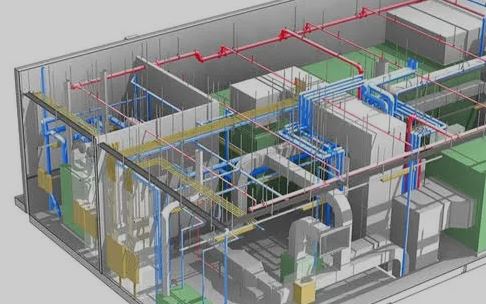Optimizing MEP Design for Data Centers in California
Introduction to MEP Design in Data Centers
In the heart of California’s thriving tech landscape, data centers play a pivotal role in powering everything from cloud computing to big data analytics. However, with the increasing demand for efficient and sustainable operations, optimizing Mechanical, Electrical, and Plumbing (MEP) design has become more crucial than ever.
MEP design integrates:
- Mechanical systems for cooling.
- Electrical systems for power distribution.
- Plumbing systems for water management.
Each component must work seamlessly to support the data center’s infrastructure, ensuring reliable operations while minimizing energy consumption. In California, where stringent energy regulations and environmental considerations shape the industry, innovative MEP solutions are essential for creating data centers that meet operational demands and sustainability goals.
This post explores cutting-edge cooling and power distribution strategies tailored for California’s unique climate and regulatory environment. By adopting these advanced technologies, data centers can enhance efficiency, reduce costs, and contribute to a greener future.
Understanding California’s Climate Challenges
California’s diverse climate presents distinct challenges for MEP design. From the coastal humidity of San Francisco to the intense heat of the Mojave Desert, data centers require tailored solutions to maintain optimal performance.
- Coastal Humidity: Excess moisture can lead to condensation issues, risking damage to sensitive equipment. Effective dehumidification systems help maintain stable humidity levels and prevent moisture-related failures.
- Extreme Heat: Inland areas experience soaring temperatures in summer, demanding energy-efficient cooling solutions such as evaporative cooling and advanced chiller systems.
- Wildfires and Air Quality: Smoke and airborne particulates can infiltrate data centers, affecting performance. High-quality air filtration systems ensure clean indoor environments, safeguarding equipment.
- Sustainability and Energy Efficiency: California’s commitment to renewable energy pushes data centers to integrate energy-efficient power solutions, such as solar panels and smart grid technology, reducing both costs and environmental impact.
By addressing these challenges, data centers can enhance resilience while aligning with California’s stringent energy policies.
Key Components of MEP Systems in Data Centers
Effective MEP design relies on three fundamental components:
1. Mechanical Systems
Cooling is essential to prevent overheating and ensure system stability. Advanced HVAC systems, such as chilled water cooling and in-row cooling units, optimize airflow and temperature control. Innovative solutions include:
- Liquid Cooling: Reduces water consumption and improves efficiency, particularly crucial in California’s drought-prone regions.
- Evaporative Cooling: Uses the natural cooling effect of water evaporation to reduce energy consumption.
2. Electrical Systems
Reliable power distribution ensures uninterrupted operations. Key elements include:
- Redundant power feeds.
- Uninterruptible Power Supplies (UPS).
- Backup generators.
By incorporating renewable energy sources like solar power, data centers can offset energy costs while reducing their carbon footprint. Smart Power Distribution Units (PDUs) enable real-time energy monitoring, improving efficiency.
3. Plumbing Systems
Plumbing systems support cooling, fire suppression, and wastewater management. Sustainable solutions include:
- Greywater recycling.
- Rainwater harvesting.
Leak detection systems prevent water damage, ensuring data center reliability.
Innovative Cooling Solutions for California Data Centers
As data centers process massive amounts of information, heat management becomes a top priority. Traditional air conditioning is often inefficient, leading operators to explore advanced cooling techniques:
- Liquid Cooling: Uses water or other coolants to absorb heat directly from servers, improving efficiency and enabling higher-density server configurations.
- Free Air Cooling: Utilizes outside air during cooler months, reducing reliance on mechanical cooling systems and lowering energy consumption.
- Immersion Cooling: Servers are submerged in a thermally conductive liquid, enhancing cooling while protecting hardware from contaminants.
- Smart Cooling Systems: Real-time data analytics adjust cooling loads based on server demand, optimizing energy usage and performance.
By adopting these solutions, data centers can improve efficiency, lower costs, and reduce their environmental footprint.
Energy-Efficient Power Distribution Strategies
To optimize power usage, data centers must implement energy-efficient distribution methods:
- High-Efficiency Transformers and Switchgear: Reducing energy loss during transmission lowers operational costs.
- Modular UPS Systems: Scalable power supply solutions ensure redundancy while optimizing energy consumption.
- Intelligent PDUs: Monitor energy usage at the device level, helping operators identify inefficiencies and adjust power allocation.
- Renewable Energy Integration: Solar power and battery storage solutions reduce dependence on the grid, cutting energy expenses and carbon emissions.
- Flexible Power Distribution Layouts: Modular designs enable future scalability, allowing easy system upgrades without costly overhauls.
Conclusion
Optimizing MEP design for data centers in California is key to achieving both operational efficiency and sustainability. Innovative cooling and power distribution solutions enhance performance while significantly reducing energy consumption and costs. By embracing these advanced strategies, data centers can meet current challenges and future-proof their infrastructure.
As the industry evolves, staying ahead with energy-efficient and environmentally responsible practices will be essential. Implementing these insights ensures that data centers remain resilient, efficient, and aligned with California’s sustainability goals, paving the way for a greener digital future.

















































